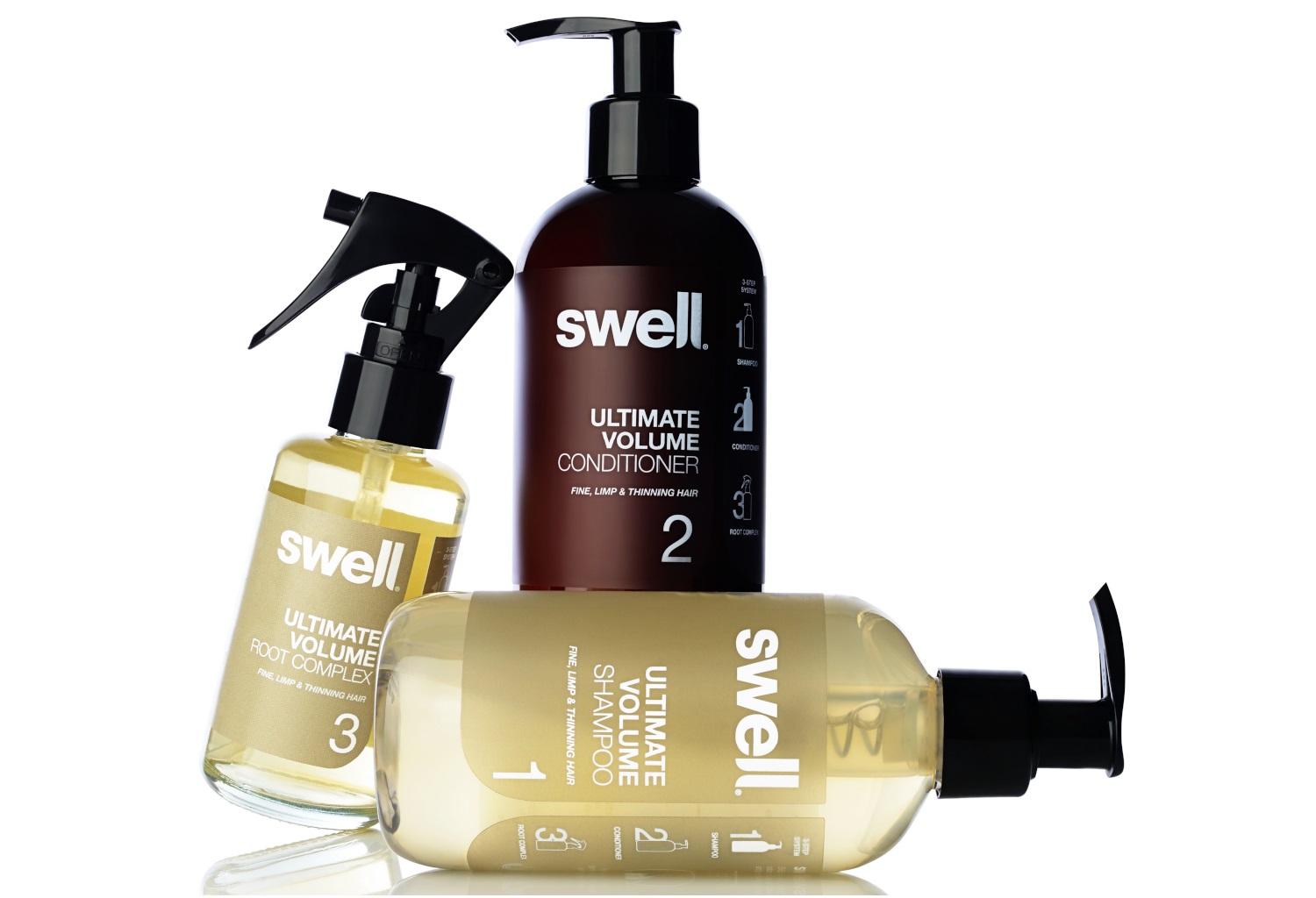Big in Beauty
In Site
Follow this topic
Bookmark
Record learning outcomes
After identifying a gap in the market for a truly effective volumising and growth-enhancing hair care range, natural ingredients expert Jonathan Stallick and hair stylist Andrew Bidwell set out to remedy the situation, leading to the creation of the silicone-free Swell range. They talk to Emily Hunter about the power of natural actives, the confidencedestroying effects of thinning hair and the future of their brand.
As the founder of Barefoot Doctor [Jonathan], you have worked in the cosmetics sector for nearly 20 years €“ how has this sector changed and evolved in that time?
Jonathan Stallick: When we first launched Barefoot Doctor (which later became Barefoot Botanicals, then Barefoot SOS), there were only a few natural cosmetic brands on the market, led by Neal's Yard Remedies and Dr Hauschka. Now, hardly a month goes by without a new natural brand entering the market, and customers have become a lot savvier with regard to ingredients. Natural products have become mainstream and accepted as the norm.
What have been the biggest changes and breakthroughs in the natural ingredients market in recent years?
JS: I think ingredients manufacturers are aware that brands are increasingly demanding natural ingredients and actives, and are becoming more particular as to how these actives are preserved as customers become more educated in this aspect. There are a lot more novel natural actives out there now that allow product formulators much more creativity in terms of functionality and performance. During my Barefoot days, we found an amazing rejuvenating ingredient called Acmella Oleracea (or 'natural botox', as it became known). When creating Swell, we found a Peruvian maca extract and an apple stem cell extract particularly effective in terms of hair growth.
Why did you become particularly interested in fine and thinning hair, and how did you identify a gap in this market?
JS: I looked at the market and could see that volumising products just weren't that good. Also, I felt that I wanted to explore thinning hair and see if there were any natural active combinations that might work. We had a couple of hair products in the Barefoot range, but they mainly targeted scalp health. To produce something that hair salons would be happy to use was a real challenge.
Once the two of you met, how did the idea for Swell arise and become a reality?
Andrew Bidwell: Very early on we established that fine, limp and thinning hair was the real problem hair type. In a cluttered marketplace full of nasty chemicals, we knew we had to come up with something new, natural, superior and results-driven that offered a new approach to the holy grail of hair €“ volume and health. Jonathan researched formulas for 18 months and I tested on hundreds of people until each problem associated with fine hair had a solution.
What does Swell offer those with fine and thinning hair that other products on the market do not?
JS: When we looked at the products on the market for fine and thinning hair and talked to women with this hair type, we realised there was a big gap in terms of expectations and performance; most volumising products tended to focus on a quick but very temporary fix, rather than getting to the root of the problem. We spent close to two years formulating and testing Swell so it would give immediate volume, blow dries that lasted for days rather than hours, improved hair growth and reduced hair loss when used regularly. Swell actually makes hair healthier and stronger, rather than damaging hair as some volumising brands can do. We aimed to be best in market and going by customer feedback, we feel we have achieved that.
What were the biggest challenges you faced when creating the range and how did you overcome these?
JS: One of the issues we faced was how to incorporate volumising and detangling into one product; normally the ingredients used for one work in opposition to the other. Traditional volumising ingredients tend to rough up the hair shaft, while silicones that are used to detangle and smooth the hair shaft can make locks limp. However, our brilliant manufacturers achieved the seemingly impossible. We believe Swell gives unsurpassable volume together with perfect conditioning and detangling.

Why do so many hair care products rely on silicones in their formulations instead of seeking alternatives that are better for the hair?
AB: Silicones are used widely throughout the hair and beauty industry. They are used to create the illusion of health, shine and manageability. Silicones are actually petro-chemicals used in mass industry as a lubricant and are extremely cheap, which is why so many cosmetic brands use them €“ they mask problems with a synthetic sheen but are not a long-term solution to dry and damaged hair.
What's your vision for Swell and what's next for the brand?
JS: We want to launch Swell in Europe, the US and other foreign markets. We have a number of different NPD ideas that we are working on, including a diffusion range for supermarkets and pharmacies, a brow and lash range, and a colour range for Swell Ultimate Volume.
To what extent do you think fine and thinning hair affects women today?
AB: I have 30 years' experience speaking to women who have fine hair or who are experiencing thinning hair. I see one common reaction from these people: distress. It's bad enough to have a bad hair day, but imagine if every day is a bad hair day, or worse still, experiencing handfuls of hair coming out or having such fine hair that the scalp is visible. Data varies depending on surveys, hemisphere, age and many other factors, but in my experience, I would put the figure of all women who will experience thinning hair at some point in their lives as high as 40%.
What are the best things that women with fine or thinning hair can do to keep their locks looking their best, and what should they avoid?
AB: The best thing a woman can do with their fine, thinning hair is to invest in Swell! The sooner they start using it, the sooner they will love their hair. They should avoid using silicones at all costs (there are lots out there, but dimethicone is the most widely used). Silicone is the death of volume for fine hair as it lays industrial oil on already soft hair.
You've worked in the hair industry for nearly three decades [Andrew] €“ what is it that you enjoy about this sector?
AB: It's the trusting relationships a hairdresser forms with their clients that keeps me interested in the hair industry; people never cease to amaze me. The technicalities of the industry are second nature and I specialise in fine hair. Of course, it's also allowed me to branch out in many different directions, from creative to business, from styling hair for the front cover of Vogue to reaching the team finals at the British Hairdresser of the Year Awards, and having my own salon for 10 years to now being the co-founder of an award-winning, growing natural hair care brand.

